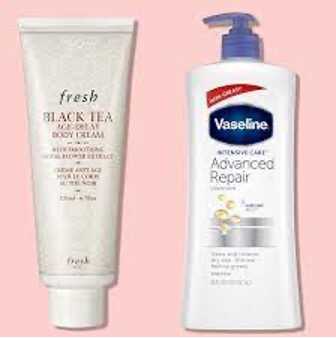Lotion is a low-viscosity topical preparation intended for application to the skin. Some skin care products, such as sunscreen and moisturizer, may be available in multiple formats, such as lotions, gels, creams, or sprays.
Dermatologists can prescribe lotions to treat or prevent skin diseases. It is not unusual for the same drug ingredient to be formulated into a lotion, cream and ointment. Creams are the most convenient of the three but are inappropriate for application to regions of hairy skin such as the scalp. At the same time, a lotion is less dense and may be readily applied to these areas. In fact, many medicated shampoos could be considered lotion.
You can use lotion-based medications for the delivery to the skin, such as:
- Antibiotics
- Antiseptics
- Antifungals
- Corticosteroids
- Anti-acne agents
- Soothing, smoothing, moisturizing or protective agents (such as calamine)
- Anti Allergens.
Most lotions are oil-in-water emulsions using a substance such as Cetearyl alcohol to keep the emulsion together, but water-in-oil lotions are also formulated. The key components of a skincare lotion, cream or gel emulsion are the aqueous and oily phases, an emulsifier to prevent separation of these two phases, and, if used, the drug substance or substances. Various ingredients such as fragrances, glycerol, petroleum jelly, dyes, preservatives, proteins and stabilizing agents are commonly added to lotions. Depending on their composition, lotions can be comedogenic, resulting in the increased formation of clogged hair follicles. People prone to acne or forming comedones often prefer lotions designed to be non-comedogenic or don’t cause outbreaks.
All topical products, including lotions, can result in skin absorption of their ingredients. Though this has some use as a route of drug administration, it more commonly results in unintended side effects. For example, medicated lotions such as Diprolene are often used with the intention of exerting only local effects. Still, absorption of the drug through the skin can occur to a small degree, resulting in systemic side effects such as hyperglycemia and glycosuria. In addition, absorption through the skin is increased when lotions are applied and then covered with an occlusive layer when used on large areas of the body or applied to damaged or broken skin.

Lotions containing some aromas or food additives may trigger an immune reaction or even cause users to develop new allergies. There is currently no regulation over the use of the term “hypoallergenic,” and even pediatric skin products with the label were found to contain allergens still. Those with eczema are especially vulnerable to an allergic reaction with lotion, as their compromised skin barrier allows preservatives to bind with and activate immune cells. The American Academy of Allergy, Asthma, and Immunology released a warning in 2014 that natural lotion containing ingredients commonly found in food (such as goat’s milk, cow’s milk, coconut milk, or oil) may introduce new allergies.







Add Comment
You must be logged in to post a comment.